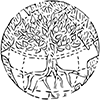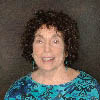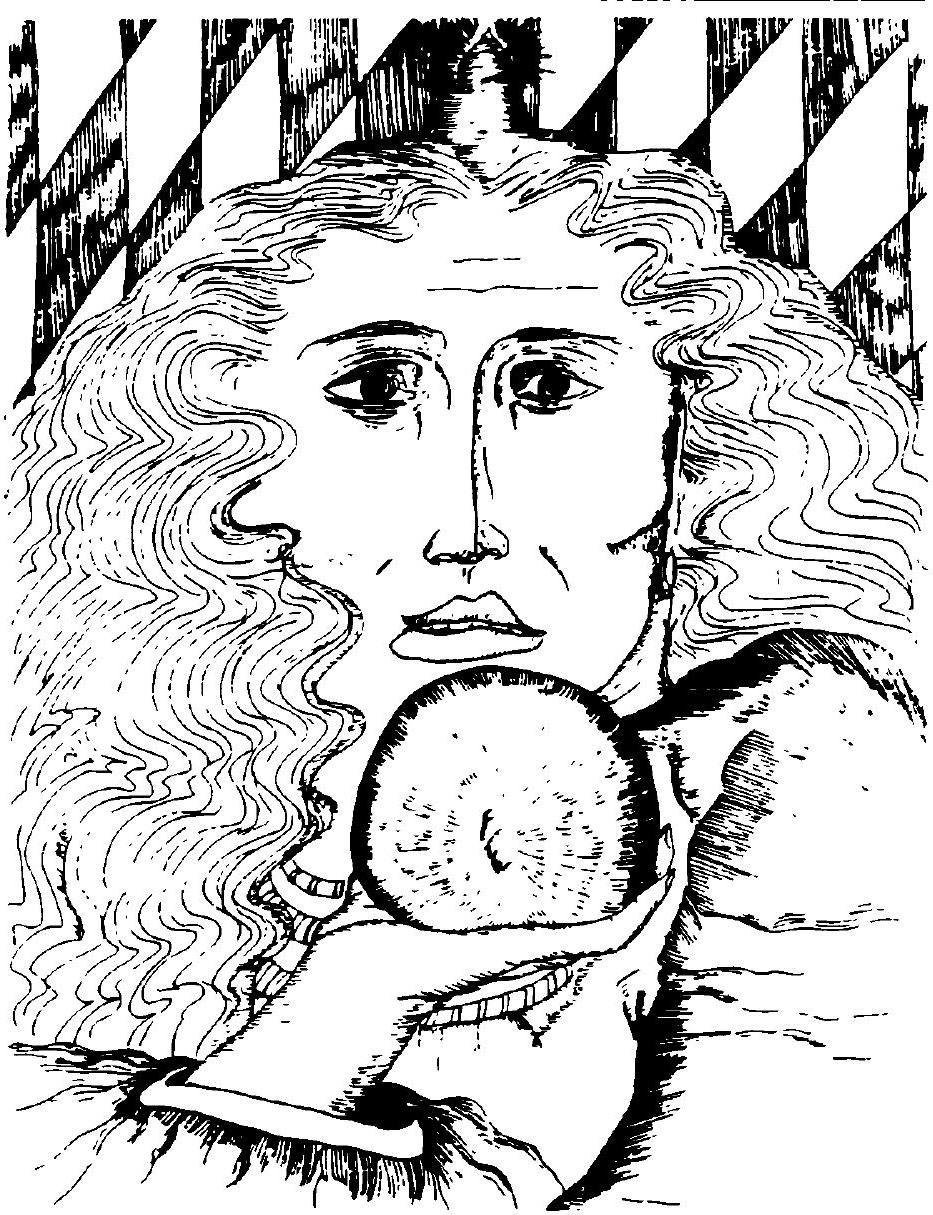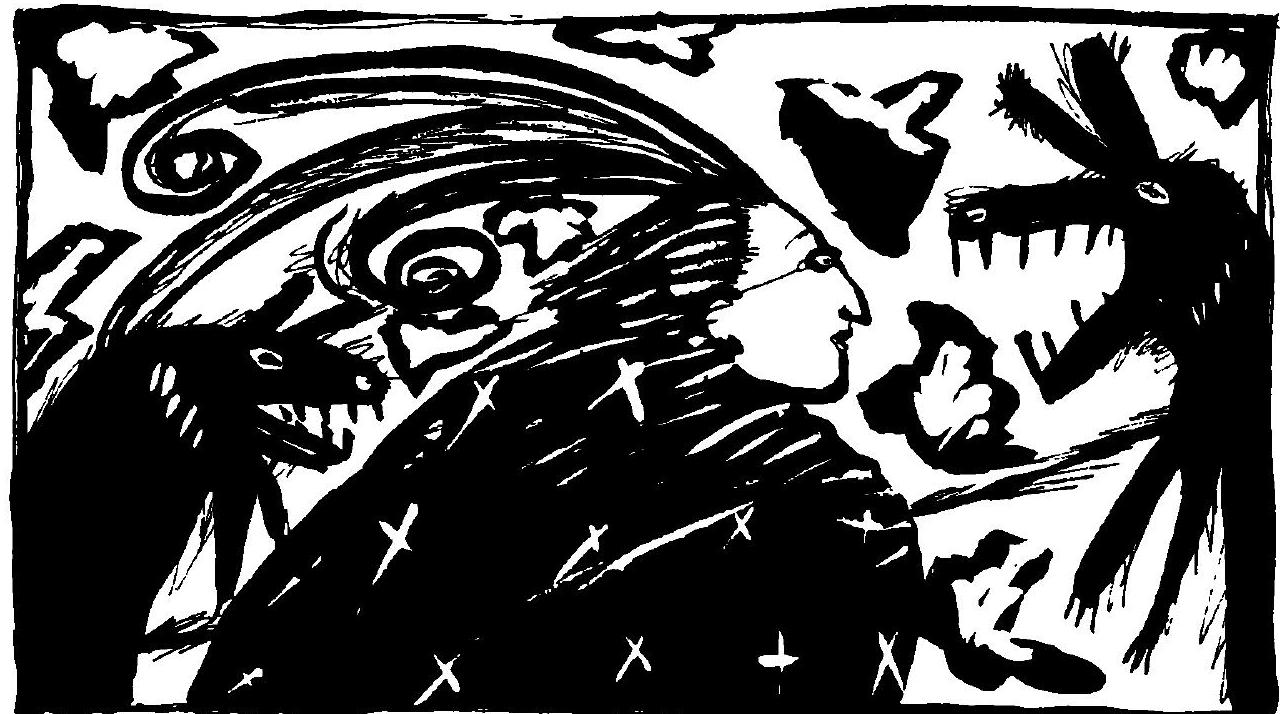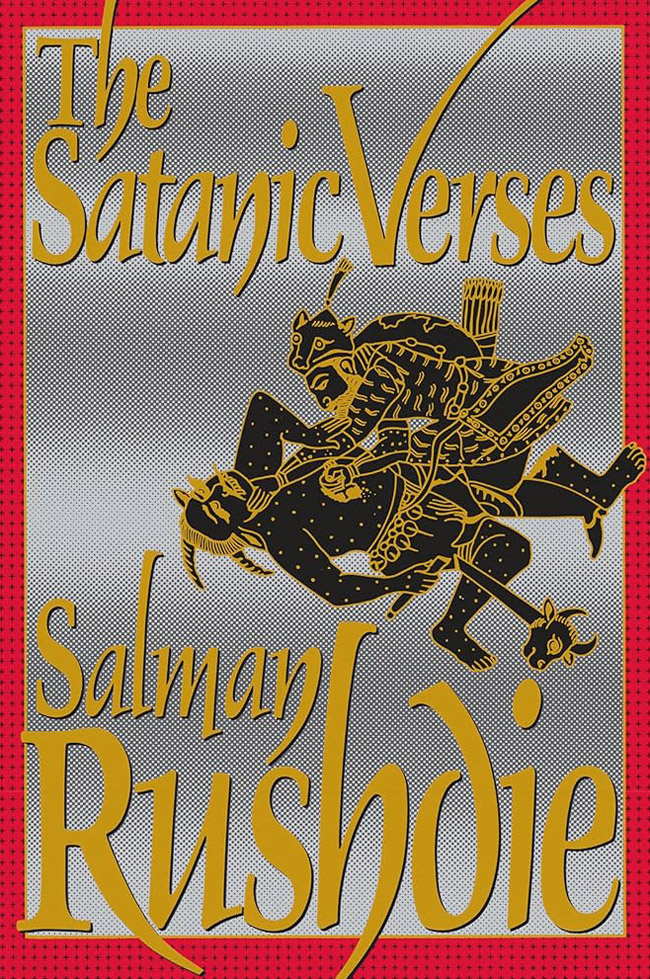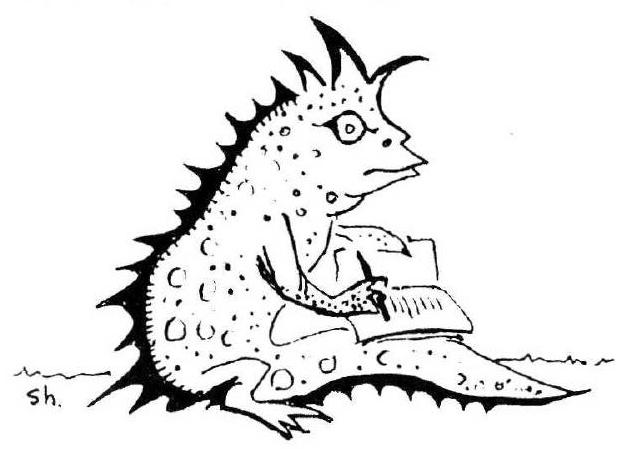
Have your dreams ever come true? My dream experience over the years, as well as the dreams I have collected of others, shows that dreams frequently preview future events. Many times the intuitive voice within clearly knew what would happen at a future time and used the dream to show, for example, my missing an airplane, having an accident or losing a possession. Days later, real life events matched the dream script presented previously. My dreams have mirrored that well known marital vow phrase "for better or worse" by showing me the positive as well as the negative, such as foreshadowing moments of success and meeting my husband.
These predictive dreams, providing a future glimpse of reality, are usually an unforgettable experience. The vividly clear dream content seems to grab you by the shoulders and demands to be remembered. When the event occurs days later, you will undoubtedly recall having seen the drama enacted in a recent dream. Speculating from my intuitive-precognitive dreams, I wondered how often and consistently I could cross the bridge from the inner dream world to the outer world to accurately preview forthcoming events.
Before describing the exploratory research which answers this question, some background thoughts will set the stage for this inquiry. Precognition, the area of focus, is that aspect of parapsychology studying the ability to accurately know about future events. Initial studies relating precognition to dreaming were conducted at the Brooklyn based Maimonides Hospital in the 1960's (Ullman, et al., 1973). Malcolm Bessant, the prime precognitive dream subject, was able to foresee randomly created events of the next day more than 60 percent of the time. Alan Vaughan (1982) pointed out that 75 percent of the subjects participating in the Maimonides studies over the years were successful in activating their psychic ability in dreams.
Since that time, people outside the laboratory setting have written about their precognitive dreams. Sometimes called premonitions, we read about warnings involving accidents (Emery, 1984, Crowley, 1986), health (Windsor, 1985), death (Drown, 1987), disaster (Walters, 1987) and even assassination plots (Vaughan, 1982). Information about the sunny side of life has also been previewed (Vaughan, 1987, Emery, 1987).
Precognition is closely related to intuition or that clear knowing which defies logic by leaping beyond factual information. Precognition and intuition, though closely related, have been separated in most studies since the former refers primarily to studies conducted in the laboratory setting. Data gathered for this exploratory research aims to clarify how we clearly know (intuition) about future events (precognition) from our dreams.
I have often wondered if the inside information presented during an intuitive-precognitive dream is accessible to any willing dreamer. Data gathered throughout this exploratory series will hopefully answer this question as well as provide clearer guidelines for interpreting the intuitive-precognitive dream. Then we can realize the prophetic words uttered so long ago by the medieval scholar Synesius of Cyrene who advocated "we do not sleep merely to live, but to learn to live well...sleep offers itself to all: it is an oracle always ready to be our infallible and silent counselor." (O'Connor, 1987, p.5)
During the course of the present exploratory research, the following questions about the intuitive-precognitive dream will be addressed:
How can we program an intuitive-precognitive dream to reveal the answer to a future event we know nothing about?
Is it easier to program intuitive dreams for ourselves or others?
What symbols or physiological state signals the presence of literal or symbolic intuitive-precognitive dreams?
METHODOLOGY
Exploratory investigations to find out more about identifying the intuitive-precognitive dream began in February, 1987. The results of that two month study showed that many of the participants quite frequently and regularly had dreams that came true. These results were presented at the Association for the Study of Dreams (ASD) annual conference (Emery, 1987). There were times when the manifest content literally described the future event. Dreaming of an unexpected activity with a particular person, for example, followed in reality with that action taking place days later. In other instances, the latent dream content symbolized the future event such as dreaming about seeing a person you hadn't seen for some time. Days later you meet a "new" person who strongly resembles the dream person. It was evident, then, that the dream content could be either literal or symbolic and still portray future events with a high degree of accuracy.
PARTICIPANTS
My first eye opener in conducting this research was that recruiting dreamers wasn't as easy as I thought. While accosted frequently to interpret others' dreams, these starry eyed dreamers were more interested in obtaining personal information than using their nocturnal reveries to answer research questions. After a few false starts in October and November of 1987, a group of female dreamers met monthly from December through May, 1988. As many as nine and as few as four attended these sessions. Seven of the women attended at least four sessions and consistently kept their dream diaries over the six month period. This dedicated group recognized the importance of this research and saw themselves as raising their own consciousness through opening the dream doorway.
PROGRAMMING FOR FUTURE EVENTS
Our programming followed the suggestions given by Alan Vaughan in his book, The Edge of Tomorrow (1982). One is directed to consult with your dream tiger who is ever alert to warn you about impending danger or menacing situations. The group was given a recent article by Alan Vaughan showing them "how to train your dream tiger." (1987) A strong emphasis was placed on asking the dream tiger for prophetic dreams that could help rather than frighten and shock.
Following Alan Vaughan's directions, the group members were asked to write out or dictate on a tape recorder the following instructions before going to bed. "I need advice and guidance from my dream tiger. I need a dream that will answer my question: (read your question). I want my dream tiger to show me a simple picture I can understand. I will arise early in the morning with the dream picture fresh in my mind. I shall be able to remember it easily and write it down. Its meaning will become clear to me. I shall follow the advice of my dream tiger."
In our formative stages, we selected the target at our October 13, 1987 meeting and decided to focus on Who will be the next Justice of the Supreme Court and when will he (she) be confirmed? This was during the time when Bork was being considered as a candidate. The response was poor as I received the only information. I can still recall the name Anthony being shouted in my ear and awakening me from sleep. As we know the Justice eventually chosen was Anthony Kennedy.
During the various exploratory phases, Alan Vaughan remained an advisor to us as we tried to clarify what would constitute an appropriate target goal. Alan pointed out the difficulty of trying to retrieve names in dreams. He suggested that we set the goal as something that could be pictorially represented since the dream presents itself in pictures and images and not analytically.
At the first meeting of the reconstituted group on December 14, 1987, we decided on our target. We asked our dream tigers for a picture showing the next significant archaeological discovery. Our success rate for this topic was poor and though random images intruded in the dreams, we truly lacked verifiable data. As Alan pointed out, it may be difficult to get feedback since archaeologists often take so long to report their discoveries. We realized that we had to find something current that could be clearly validated.
We easily identified our target at the January 25,1988 meeting. Ensconced in the mid-west during winter where the threat of paralyzing weather looms, we asked that our dream tiger show me the scene of the next immobilizing environmental situation. This was a good test in more ways than one since we had to clear our minds of anticipating snow and ice scenes. The exciting results showed that three group members had hits depicting the devastating Rio de Janeiro floods and mudslides which forced the Mayor to declare the city a disaster area. Following are some dream excerpts:
Kathi:
I see myself in thick rubber green boots. They are covered with brown, wet mud. I have mud on my arms and there is mud smudged on my face and clothes. Everywhere I look is thick goopy mud. I am on a roadway. Some of the road has been cleared, but mud continues to ooze down on it from the hill. I am trying to comfort as well as aid all the people who are affected by this mud. More rain is predicted.
Nanci:
I'm looking at two deer on the road. There is a terribly eroded mountain behind them. Then I'm looking at the top of one of the mountains where several houses have collapsed over the side. A few are still standing precariously. I'm concerned about my house.
I will be describing precognitive symbols later, but it is interesting to note at this point that deer in a dream represent precognition for Nanci.
Mary:
What I see is the top of a ridge-perhaps a mountain ridge. I am aware of many trees and greenery. As I am scanning the scene from above (observer) I see the ridges just below the top begin to slide away from the rest of the structure-trees and all.
We felt all of these dreams were highly significant and were particularly pleased since the Grand Rapids winter distractions did not influence the content.
We shifted our target from outside events by focusing on a group member's personal concern. At that time, my book manuscripts were being considered by several publishers. On February 23, 1988, we decided to focus on these books; namely, Developing Your Intuition: A Beginner's Guide and Managing Intuitively. The group asked, What publisher will accept these books and when will Marcia receive notification? In addition, after an answer was recorded, the group member was urged to program for an intuitive-precognitive dream showing the resolution to a personal problem.
The months of April and May were reported by group members but were off target. Additional information presented still awaits verification. Some symbols representing publishers were present with the most interesting information coming from Nanci. As mentioned previously, Nanci sees deer as precognitive symbols.
She recorded, I see my deer again so I think that's my symbol of a precognitive dream. At the end and totally unrelated to the dream at hand, a book rudely zooms into focus, like a camera zooming in, and the book entitled Prince of Tides fills my total view. I awake abruptly and say, "Doubleday."
It is interesting that the publisher of the book presented in the dream is Doubleday. Both Bantam and Doubleday are considering my manuscripts. A follow-up dream showed a calendar. I see...that the month of my dream is March-the last blackened date, the ninth. Also, I open a book. It says page 10. I say, "No, it's 11." These two images are distinct. In the delicacy of interpreting predictive dreams, one often has to wait for validation. In this instance, I had an unexpected contact with Bantam on the ninth of March unbeknownst to the dreamer. However, I am still awaiting word on a final acceptance.
On March 28, 1988 we focused on more personal concerns for the group members by asking, What major changes are coming up this year for anyone in the dream group? What changes are coming up for me?
Robin shared the following dream in answer to this programming. Nineteen-seventy-six, Bicentennial year. Nineteen-seventy-six was the year I graduated from high school. I was on our senior float for homecoming. Our float was of the Declaration of Independence. My overall feeling is of freedom. Though varied meanings could be attributed to this dream, Robin felt that she was being shown that this year would be liberating for her.
The group members' response was poor to this question. We all felt that the word "change" was too traumatic for members. Even though the group as a whole was highly intuitive, they seem to block future visions of change. Another possibility could be that we had been programming for four months and the dreaming vehicle may have been tired.
Our last attempt was programming an event that could be validated within a few weeks. We asked, Who will win the Old Kent River Bank Run and could you show me what the winning situation will look like? Nanci's response was the clearest. She said, I see two men. One is on the left. He is heavier, stocky, dark, shorter. The one on the right is taller and thinner, lighter, called Steve or Pete. There's some question regarding who is the winner. The scene changes. I'm seated at a large table with two males and two to three females. The two males are runners from the dream within a dream. I talk to the thin runner on my right. He says that they (he and the short stocky man) were not evenly matched. Later, the results show Mark Smith as the winner (close to name Steve!) and a picture of the outcome of the short stocky man in the wheelchair as the winner in the handicapped division. Indeed, as the dream sequence showed, they were not evenly matched.
From our preliminary exploratory results, we are pleased to see that we could program our intuitive-precognitive dreams to describe future events we knew little or nothing about. Also, it seemed to be easier to program for others than for ourselves. In this informal study, we were focusing on actively programming our dreams. In contrast, there are times we spontaneously or passively receive intuitive-precognitive dream information about outside events or people we know. The group felt that their responsiveness toward receiving this type of spontaneous predictive information was heightened as a result of our informal research probing.
The correlation between the presented dream content and the accuracy of the predicted information is substance for another study. Though many spontaneous intuitive-precognitive dreams have been collected from the group during this six month period, I will end by sharing what symbols or outside information informed the dreamer about the intuitive-precognitive nature of the dream.
CONFIRMING SIGNALS FOR THE INTUITIVE-PRECOGNITIVE DREAM
Though we were calling on our dream tigers, only Kathy literally made contact with a tiger. She was able to cuddle and pick up this animal as she would her cat. Whenever the elicited information was presented, Kathy thanked the dream tiger, hugged him generously and said she would be back soon. She wanted him to feel appreciated for his efforts.
Robin has a white dove come to her to preface the intuitive-precognitive dream. Otten the colors of white and purple are presented while two or three doves come to fly around. At times there are sparkling white lights as an inner voice carries on a dialogue.
As mentioned, Nanci sees a deer or two and has had the actress Jane Seymour appear frequently to validate the precognitive nature of the dream. We were amused by the punny nature of her dreamer presenting someone who will help her "see more."
Kathy has an Eagle accompanied by a bright white light. When dreaming of the mud slides, she felt pressed to her bed during the dream and upon awakening. Other symbols given were an eye and a hawk.
Members of the group also knew the dream was premonitory by their physical states. Most experienced profuse sweating and a higher body temperature. Some were literally frozen or rooted to the spot feeling an awesome quality about the dream. The dream has been described by many participants as bigger and more powerful. It seems that something was working through their thoughts but not of their thoughts. Mary shared that in her intuitive-precognitive dreams, time is meaningless. The action stops while she is fully conscious and clear headed. The message seems to come through her forehead like water into a sponge. She mentioned, "My forehead opens to this message. Visually, it is like looking up through water toward the surface. Then instantly it becomes clear and focused. This is real and I understand that l'm dreaming while l'm not." For many members the relation to the lucid dream was strong. While lucid dream researchers don't usually touch on the precognitive aspect, this dimension would be interesting to explore.
It is noteworthy that the majority of precognitive dreams were provided in the days following the meeting. This is when the suggestion was strongest since we just talked about intuitive-precognitive dreams and members felt strengthened by the support from each other. No one ever felt far out or unusual for having such dreams.
Is this study and inquiry of precognitive dreams new? Hardly! The outstanding second century Roman, Artemidorus (1975) in his well known book The Interpretation of Dreams described various dream activity. He listed the kinds of dreams with different qualities including visions, oracles, fantasy and apparitions. He saw divine message dreams as equivalent to oracles. In fact, the Bible, with its many references to psi phenomena, states, "If anyone among you is a prophet, I will make myself known to him in a vision, I will speak to him in a dream" (Numbers 12:6). The ancient writings referring to oracular dreams seem to correspond to the intuitive-precognitive dream. We are now simply going back to study future dreams. As prophets we can become more profitable in living as we acknowledge and understand that dream information does forecast future events.
REFERENCES
Artemidorus, The Interpretation of Dreams: Oneirocritica, trans. R.J. White, Noyes Press, Parkridge, NJ, 1975.
Crowley, J., "Examining Some Precognitive Dreams: Do They Simply Predict or is There Something More?" Journal of Religion and Psychical Research, July, 1966, 9, 3, 175-181.
Drown, R., "Possible Precognitive Dreams of my Father's Unexpected Death," ASD, February, 1987, 4, 1, 11-12.
Emery, M., "Precognitive Dreams," DNB, November/December, 1984, 3, 6, 45.
Emery, M., "Dreams," Single File, March, 1987, 6, 2, 39-41.
Emery, M., "Identifying and Interpreting the Intuitive-precognitive Dream." Paper presented at the annual
meeting of the Association for the Study of Dreams, Arlington, VA, June, 1987.
O'Connor, P., Dreams and the Search for Meaning, New York: Paulist, 1987.
Ullman, M., Krippner, S. with A. Vaughan, Dream Telepathy, New York, Macmillan, 1973.
Vaughan, A., "Dream Tigers," Single File, October, 1987, 4-12.
Vaughan, A., The Edge of Tomorrow, New York, Coward, McCann, Geoghegan, 1982.
Walters, K., "An Ostensibly Precognitive Dream of the 1980 Sunshine Skyway Bridge Disaster," Journal of Religion and Psychical Research, April, 1987, 10, 2, 97-103.
Windsor, J., The Inner Eye, Englewood Cliffs: Prentice-Hall, 1985.
